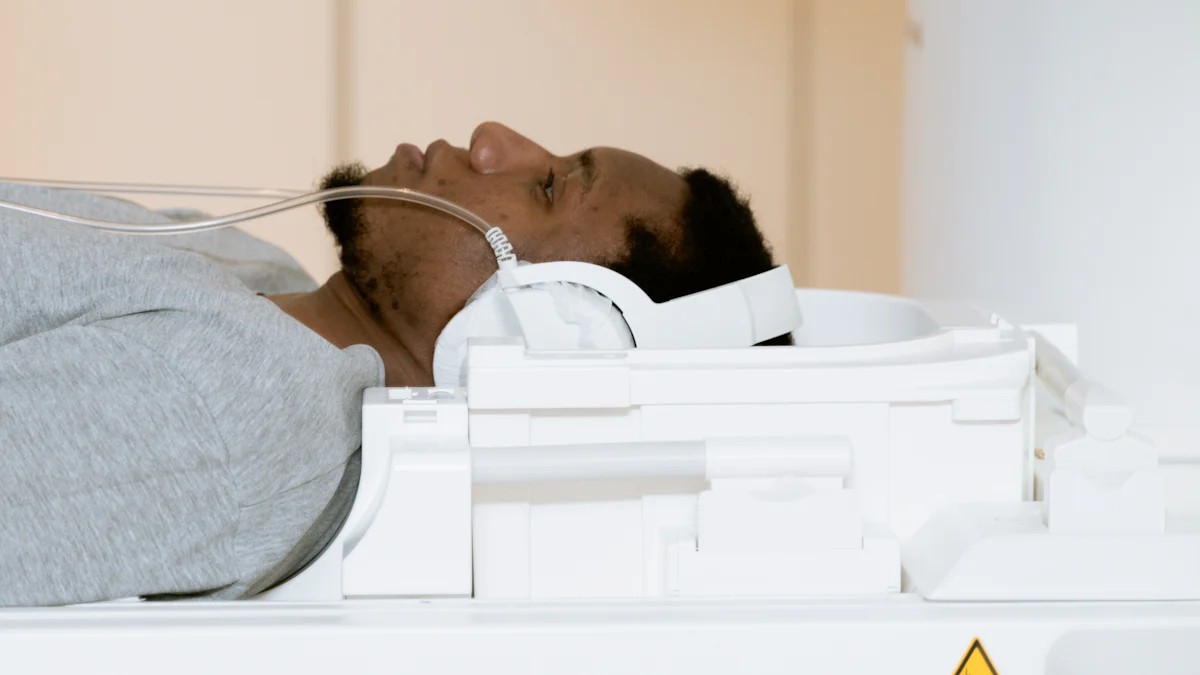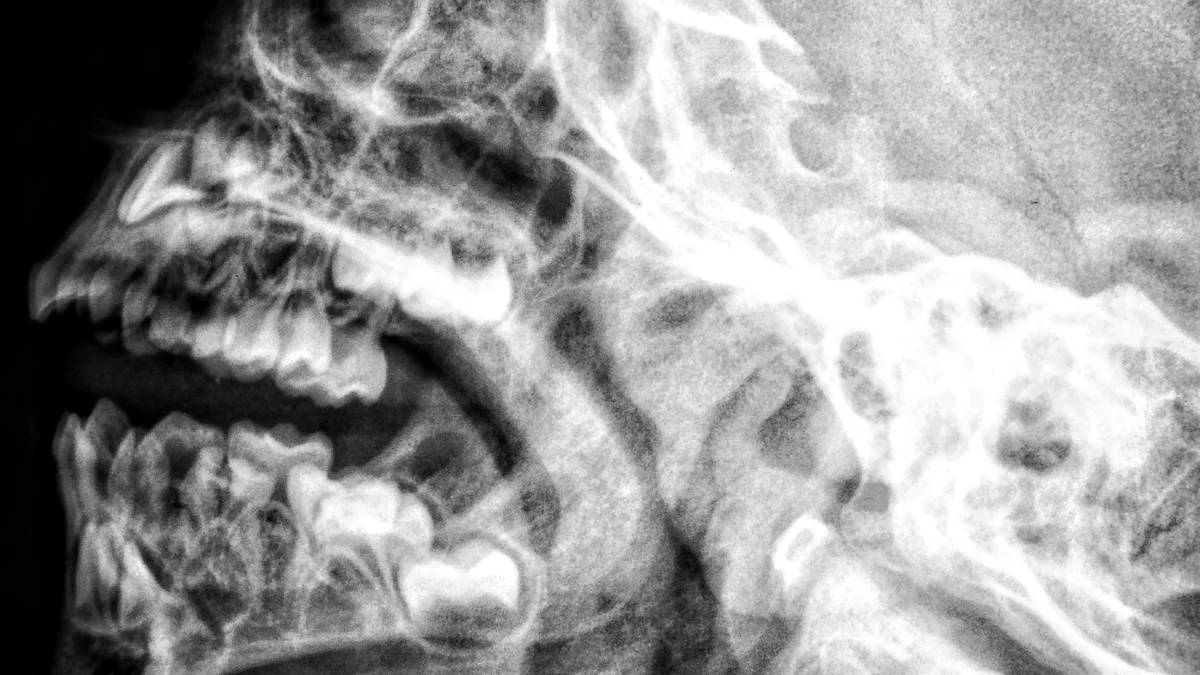Tips for Understanding CT T.W Meaning

When you see "CT T.W" on a jewelry label, it stands for Carat Total Weight. This term refers to the combined weight of all diamonds in a piece of jewelry, measured in carats. It’s not about the size of individual stones but their total weight together. Understanding this helps you evaluate the jewelry’s value and visual appeal. A higher CT T.W often means a more striking and luxurious design. By knowing the ct. t.w meaning, you can make smarter choices when selecting diamond jewelry that fits your style and budget.
Key Takeaways
- CT T.W stands for Carat Total Weight, representing the combined weight of all diamonds in a piece of jewelry, not the size of individual stones.
- Understanding CT T.W helps you evaluate the overall value and visual appeal of diamond jewelry, guiding smarter purchasing decisions.
- To calculate CT T.W, simply add the carat weights of all diamonds in the piece; this straightforward method empowers you to assess jewelry accurately.
- CT T.W is crucial for comparing jewelry pieces, but remember to also consider other quality factors like cut, clarity, and color for a complete evaluation.
- When shopping, ask jewelers about the CT T.W, the number of diamonds, and their quality grades to ensure you make an informed choice.
- A higher CT T.W often indicates a more luxurious design, but it doesn't guarantee better quality; always look at the overall craftsmanship.
- Reading jewelry labels carefully and understanding CT T.W can enhance your confidence in selecting pieces that truly reflect your style and budget.
What Is the CT T.W Meaning in Diamond Jewelry?

Definition of CT T.W
CT T.W, or Carat Total Weight, represents the combined weight of all diamonds in a piece of jewelry. It’s measured in carats, where one carat equals 200 milligrams. This measurement doesn’t focus on individual stones but instead considers the total weight of all diamonds together. For example, if a ring has three diamonds weighing 0.3 carats each, the CT T.W would be 0.9 carats.
Understanding this term helps you evaluate the overall value and appearance of diamond jewelry. As one gemologist explains, “While CT T.W is a commonly used measurement, it is crucial to understand how it differs from other jewelry measurements to make an informed choice.” Knowing the ct. t.w meaning ensures you can confidently assess the jewelry you’re considering.
How CT T.W Differs from Individual Carat Weight
CT T.W differs significantly from the carat weight of a single diamond. Individual carat weight refers to the weight of one gemstone, while CT T.W combines the weights of all diamonds in a piece. For instance, a necklace with ten small diamonds might have a CT T.W of 1 carat, but each diamond could weigh only 0.1 carats.
This distinction matters because smaller diamonds, even when their total weight equals that of a single large diamond, often cost less. A jewelry expert highlights this by stating, “While CT T.W represents the combined weight of all the diamonds in a piece of jewelry, ct is only ever used to state the weight of one singular gemstone.” By understanding this difference, you can better compare jewelry pieces and their pricing.
Why Jewelers Use CT T.W in Descriptions
Jewelers use CT T.W to provide a clear and concise description of a jewelry piece’s total diamond weight. This measurement simplifies the buying process by giving you an idea of the overall diamond content without listing the weight of each stone individually. It’s especially helpful for designs with multiple small diamonds, such as pavé or cluster settings.
CT T.W also plays a role in showcasing the visual impact of a piece. A higher CT T.W often indicates a more dazzling and luxurious design. However, it’s essential to remember that CT T.W doesn’t account for other factors like cut, clarity, or color, which also influence a diamond’s beauty. As one diamond expert notes, “A carat total weight (CT T.W) constitutes a natural diamond because it refers to how many diamonds are contained in one stone.” This highlights the importance of understanding CT T.W alongside other quality factors when making your choice.
How to Calculate CT T.W in Diamond Jewelry
Step-by-Step Guide to Calculating CT T.W
Calculating CT T.W is simpler than you might think. It involves adding up the carat weights of all the diamonds in a jewelry piece. Here’s how you can do it:
-
Identify the Carat Weight of Each Diamond: Check the label or ask the jeweler for the carat weight of every diamond in the piece. For example, if a ring has three diamonds, note the weight of each one.
-
Add the Weights Together: Add the individual carat weights to find the total. If the diamonds weigh 0.2, 0.3, and 0.5 carats, the CT T.W would be 1.0 carat.
-
Verify the Total Weight: Double-check your calculations to ensure accuracy. This step is crucial, especially when comparing different pieces of jewelry.
By following these steps, you’ll understand the ct. t.w meaning and how it applies to the jewelry you’re considering. This knowledge helps you make informed decisions when shopping.
Examples of CT T.W in Different Jewelry Designs
CT T.W varies depending on the design and number of diamonds in a piece. Let’s look at a few examples:
-
Solitaire Rings: A solitaire ring typically features one diamond. If the diamond weighs 1 carat, the CT T.W is also 1 carat.
-
Cluster Earrings: Cluster earrings often include multiple small diamonds. If each earring has five diamonds weighing 0.1 carats each, the total CT T.W for the pair would be 1 carat.
-
Tennis Bracelets: These bracelets usually have a row of diamonds. If a bracelet contains 20 diamonds, each weighing 0.05 carats, the CT T.W would be 1 carat.
These examples show how CT T.W reflects the total weight of diamonds in various designs. It’s a helpful way to compare pieces and understand their value.
Factors That Can Influence CT T.W Calculations
Several factors can affect CT T.W calculations. Knowing these can help you interpret the numbers more accurately:
-
Number of Diamonds: More diamonds mean a higher CT T.W. However, the size of each diamond also matters.
-
Individual Carat Weights: Smaller diamonds may add up to the same CT T.W as one large diamond, but their cost and appearance differ.
-
Types of Gemstones: CT T.W applies only to diamonds. If a piece includes other gemstones, like sapphires or rubies, their weight isn’t part of the CT T.W.
-
Design Style: Jewelry with intricate designs, such as pavé settings, often has many small diamonds. This can result in a high CT T.W, even if no single diamond is large.
Understanding these factors ensures you don’t rely solely on CT T.W when evaluating jewelry. Always consider other aspects, like cut, clarity, and color, to get the full picture.
The Significance of CT T.W in Evaluating Diamond Jewelry

CT T.W and the Overall Appearance of Jewelry
CT T.W plays a big role in how a piece of diamond jewelry looks. The total weight of the diamonds directly impacts the sparkle and brilliance you see. A higher CT T.W often means more diamonds or larger stones, which can create a bold and luxurious appearance. For example, a tennis bracelet with a CT T.W of 2 carats will likely look more dazzling than one with a CT T.W of 1 carat.
However, it’s not just about the numbers. The arrangement of the diamonds also matters. Jewelry with a high CT T.W but poorly arranged stones might not look as appealing as a well-designed piece with a lower CT T.W. Jewelers use CT T.W to highlight the visual presence of their designs, especially in pieces with multiple diamonds, like cluster rings or pavé settings. When you understand the ct. t.w meaning, you can better evaluate how it contributes to the overall beauty of the jewelry.
Comparing CT T.W with Other Diamond Quality Factors (Cut, Clarity, Color)
While CT T.W is important, it’s only one part of the story. Other factors like cut, clarity, and color also affect a diamond’s quality and appearance. The cut determines how well a diamond reflects light, creating that signature sparkle. Clarity refers to the presence of imperfections, while color measures how white or colorless the diamond appears.
For instance, two pieces of jewelry might have the same CT T.W, but their overall quality could differ greatly. A necklace with well-cut, high-clarity diamonds will outshine one with poorly cut stones, even if both have a CT T.W of 1 carat. This is why jewelers emphasize CT T.W alongside these other factors. By considering all these elements together, you can make a more informed decision when choosing diamond jewelry.
Addressing Common Misconceptions About CT T.W
Many people misunderstand CT T.W, which can lead to confusion when shopping for jewelry. One common misconception is that CT T.W reflects the size of individual diamonds. In reality, it only measures their combined weight. A ring with a CT T.W of 1 carat might have several small diamonds rather than one large stone.
Another myth is that a higher CT T.W always means better quality. While a higher total weight can enhance a piece’s visual impact, it doesn’t guarantee superior craftsmanship or diamond quality. For example, a bracelet with a CT T.W of 2 carats might include lower-grade diamonds compared to a 1-carat bracelet with premium stones.
Jewelers introduced CT T.W as a standard measurement to simplify comparisons, but it’s essential to dig deeper. Always ask about the cut, clarity, and color of the diamonds, and don’t rely solely on CT T.W to judge a piece’s value. Understanding these nuances ensures you get the most out of your purchase.
Practical Tips for Buyers to Understand CT T.W
How to Read and Interpret CT T.W on Jewelry Labels
Jewelry labels often include CT T.W, but understanding what it means can feel tricky at first. When you see this term, it refers to the total weight of all diamonds in the piece, measured in carats. To interpret it correctly, focus on the number listed next to CT T.W. For example, if a ring label says "CT T.W: 1.5," it means the combined weight of all diamonds in that ring is 1.5 carats.
Pay attention to whether the label specifies the size of individual diamonds. Some labels only show the total weight, leaving out details about the number or size of the stones. If you’re unsure, ask the jeweler for clarification. Knowing how to read these labels helps you compare pieces more effectively and ensures you understand the ct. t.w meaning before making a purchase.
Questions to Ask Jewelers About CT T.W
When shopping for diamond jewelry, asking the right questions can make a big difference. Here are some key questions to consider:
- What is the CT T.W of this piece? This gives you a clear idea of the total diamond weight.
- How many diamonds are included in the CT T.W? Knowing the number of stones helps you understand whether the piece features one large diamond or several smaller ones.
- What are the cut, clarity, and color grades of the diamonds? These factors impact the quality and appearance of the jewelry.
- Are there any synthetic or treated diamonds in this piece? This ensures you know exactly what you’re buying.
Jewelers appreciate informed buyers, so don’t hesitate to ask these questions. As one jeweler explained, “Understanding CT T.W is essential for making informed decisions. It provides valuable insights into the size, value, and significance of the gemstones used in a piece.” By asking these questions, you’ll feel more confident in your choice.
Balancing CT T.W with Design, Budget, and Other Quality Factors
CT T.W is important, but it’s not the only thing to consider when buying diamond jewelry. You also need to think about the design, your budget, and other quality factors like cut, clarity, and color. A piece with a high CT T.W might look impressive, but if the diamonds have poor clarity or the design doesn’t suit your style, it may not be the best choice.
Start by setting a budget and deciding what matters most to you. Do you prefer a bold design with many small diamonds or a simpler piece with one larger stone? Consider how the CT T.W fits into your overall preferences. For example, a tennis bracelet with a CT T.W of 2 carats might cost less than a solitaire ring with a single 1-carat diamond because smaller stones are often less expensive.
Remember, balance is key. As jewelers often say, “CT T.W plays a significant role in determining the value and appearance of a piece, but it’s crucial to evaluate it alongside other factors.” By keeping this in mind, you can find jewelry that matches your style, meets your expectations, and fits your budget.
Understanding CT T.W is key when evaluating diamond jewelry. It simplifies the process of comparing pieces by focusing on the total diamond weight, giving you a clearer picture of their value and brilliance. However, don’t stop there. Always consider other factors like cut, clarity, and color to ensure you’re getting the best quality. Ask questions, compare options, and prioritize what matters most to you—whether it’s design, budget, or overall appeal. By doing so, you’ll feel confident in choosing jewelry that truly reflects your style and preferences.
FAQ
What does CT T.W represent in jewelry?
CT T.W, short for Carat Total Weight, represents the combined weight of all diamonds in a piece of jewelry. It gives you an idea of the total diamond content without focusing on individual stones. For example, if a ring has three diamonds weighing 0.2 carats each, the CT T.W would be 0.6 carats.
Pro Tip: Understanding CT T.W helps you evaluate the overall value and appearance of diamond jewelry.
What does 1/4 CT T.W mean?
When you see 1/4 CT T.W on a jewelry label, it means the total weight of all diamonds in the piece equals one-quarter of a carat. This measurement includes all diamonds combined, not just one stone.
Example: A pair of earrings with four diamonds, each weighing 0.0625 carats, would have a CT T.W of 1/4 carat.
How is CT T.W different from CT?
CT refers to the weight of a single diamond, while CT T.W represents the total weight of all diamonds in a jewelry piece. For instance, a necklace with ten small diamonds might have a CT T.W of 1 carat, but each diamond could weigh only 0.1 carats.
Quick Tip: If you’re comparing jewelry, remember that CT focuses on one stone, while CT T.W considers the entire design.
What do CT T.W and CTW stand for in diamond jewelry?
Both CT T.W and CTW stand for Carat Total Weight. They measure the total weight of all diamonds in a piece of jewelry. These terms are often used interchangeably by jewelers to describe the diamond content.
Note: CT T.W or CTW does not include the weight of other gemstones or the metal used in the jewelry.
How is CT T.W calculated?
To calculate CT T.W, you add the carat weights of all diamonds in the jewelry. For example, if a bracelet has five diamonds weighing 0.2 carats each, the CT T.W would be 1 carat.
Steps to Calculate:
- Identify the carat weight of each diamond.
- Add the weights together.
- Verify the total weight for accuracy.
Does a higher CT T.W mean better quality?
Not necessarily. A higher CT T.W indicates more diamonds or larger stones, but it doesn’t guarantee better quality. Factors like cut, clarity, and color also play a significant role in determining the overall quality of the diamonds.
Reminder: Always consider CT T.W alongside other diamond quality factors to make an informed decision.
What should you ask a jeweler about CT T.W?
When shopping for diamond jewelry, ask questions to ensure you understand the CT T.W and its significance. Here are a few examples:
- What is the CT T.W of this piece?
- How many diamonds contribute to the CT T.W?
- What are the cut, clarity, and color grades of the diamonds?
- Are there any synthetic or treated diamonds included?
Tip: Asking these questions helps you feel confident about your purchase.
How does CT T.W affect the appearance of jewelry?
CT T.W impacts the overall look of a piece. A higher CT T.W often means more sparkle and brilliance due to the increased diamond content. However, the arrangement and quality of the diamonds also influence the visual appeal.
Example: A tennis bracelet with a CT T.W of 2 carats will likely appear more dazzling than one with a CT T.W of 1 carat.
Can CT T.W include non-diamond gemstones?
No, CT T.W applies only to diamonds. If a piece of jewelry includes other gemstones, their weight is not part of the CT T.W. This measurement focuses solely on the total weight of diamonds.
Important: Always check the label or ask the jeweler if the piece contains additional gemstones.
Why is CT T.W important when buying jewelry?
CT T.W simplifies the process of comparing jewelry by focusing on the total diamond weight. It helps you understand the value and brilliance of a piece. However, it’s essential to consider other factors like design, budget, and diamond quality to make the best choice.
Final Thought: Knowing the ct. t.w meaning ensures you can confidently evaluate and select jewelry that suits your style and preferences.
See Also
Comparing Tungsten Diamond Rings With Traditional Options
A Guide To Diamond Cuts For Engagement Rings
Reviewing 10 Carat Lab Grown Tennis Bracelets

